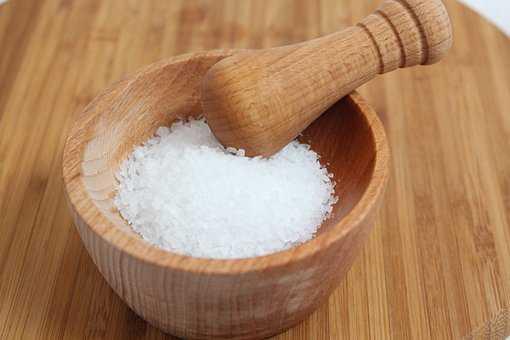Explore the World's Best Ideas
Join today and uncover 100+ curated journeys from 50+ topics. Unlock access to our mobile app with extensive features.
Salt: The Flavour Potentiator
One of the oldest foods in the world, salt is not as much a flavour in itself as it is an enhancer, bringing out the flavors in all kinds of foods. It makes noodles, watermelon, meat, and all other kinds of food taste richer and generally better.
Humans crave salt as it has the chemicals we need to survive in the ionic compound composed of sodium and chlorine.
10
83 reads
All About Salt
Salt is harvested from ocean water, and now increasingly from salt mines, like the Himalayan Pink Salt mine called Khewra in Pakistan. Salt is mined much like coal, with explosives and excavations.
All salt is essentially sodium chloride, and it originates from the oceans and seas, even when it is harvested from caves. Salt is a mineral and if no anti-caking agents are added to it, is sometimes labeled as organic, which is not accurate as it isn’t an organically grown substance.
10
75 reads
Sea Salt
Drying the ocean or sea water is a universal way of extracting sea salt, though the french method of retaining some moisture gives it a softer consistency.
Sea salt is also harvested from ponds and is generally from the bottom depths known as oeillets. The french method prefers harvesting from the surface, with some variants having larger crystals.
10
82 reads
Hawaiian Salt
A dried variant of sea-salt, hawaiian salt is dried using lava beds, giving it a brick-like (red Hawaiian salt) or darker (black Hawaiian Salt) color.
Charcoal is also added to normal sea salt to produce the same effect, and a similar color does not guarantee a similar process of extraction.
10
50 reads
Table Salt
The standard cubic crystal salt is known as table salt, with the small and even crystals making it flow from the container easily.
This popular salt may have added anti-caking agents like silicon dioxide or dextrose so that the salt is not clumpy. Iodine is generally added to table salt, and according to medical science, is an important nutrient.
11
71 reads
Kosher Salt
A non-iodine salt, Kosher salt is of a larger and fluffier shape, which makes it stick to the food it is sprinkled on and detonate it’s flavour. The large crystals of this salt are used to ‘kosher’ meat according to Jewish laws, hence the name.
Many varieties of kosher salt contain a bit of anti-caking agents like yellow prussiate soda, or sodium ferrocyanide (I would skip that!)
10
57 reads
Himalayan Pink Salt
This salt is mined from Pakistan and is pinkish in color, and is marketed in an exotic manner, adding to its appeal. The natural pink color glows, and all other properties remain the same as sea-salt.
11
96 reads
Different Kinds Of Salt
- Flake Salt: Pyramid-shaped crystals make this salt brittle and crunchy.
- Slab Salt: Slabs of Himalayan pink salt are used to serve food, as they retain the heat well. These salt trays are usually the mined slabs of pink salt.
- Rock Salt: This salt has uses in ice-cream making and in retaining dry ice, due to its rocky, chunky shape. It is also used to melt ice on the roads.
- Pickling Salt: A fine salt with smaller crystals, this variety is free from anti-caking agents and iodine.
- Kala Namak: Also known as black salt, this indian variety of salt has traces of copper and caramel, and tastes a bit like overcooked boiled eggs, or even rotten eggs.
- Infused/Seasoned Salts: Various smoked and seasoned salts are in the market providing infusions, flavours and colors like saffron, garlic, vanilla, various kinds of herbs. They are able to blend well, as salt is a preservative in itself.
13
46 reads
IDEAS CURATED BY
Friend of animals everywhere. Hardcore internet enthusiast and avid reader. My favorite topic is how to live a healthy life
Cora H.'s ideas are part of this journey:
Learn more about health with this collection
Different Easter traditions around the world
The significance of Easter eggs and bunnies in modern culture
The importance of the holiday in the Christian faith
Related collections
Similar ideas
4 ideas
How Pink Salt Took Over Millennial Kitchens
theatlantic.com
18 ideas
How to Stock a Modern Pantry
nytimes.com
Read & Learn
20x Faster
without
deepstash
with
deepstash
with
deepstash
Personalized microlearning
—
100+ Learning Journeys
—
Access to 200,000+ ideas
—
Access to the mobile app
—
Unlimited idea saving
—
—
Unlimited history
—
—
Unlimited listening to ideas
—
—
Downloading & offline access
—
—
Supercharge your mind with one idea per day
Enter your email and spend 1 minute every day to learn something new.
I agree to receive email updates

